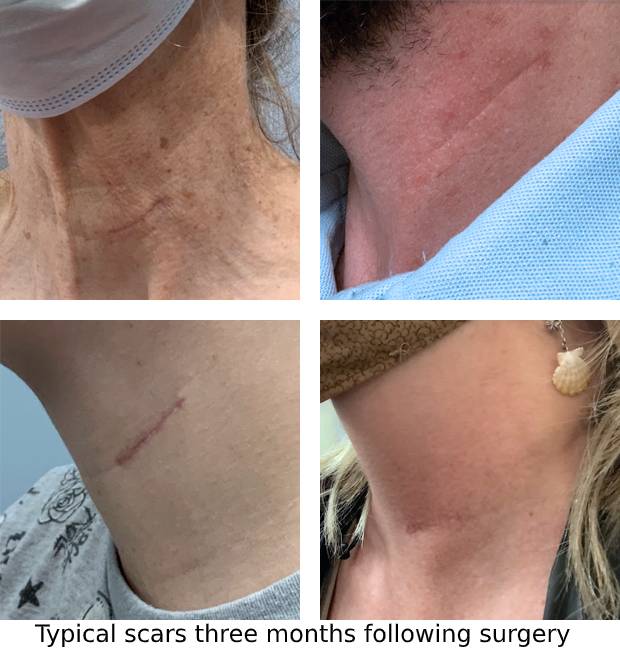
What matters most with your RA treatment?
The SetPoint Advantage
SetPoint Therapy uses neuroimmune modulation to activate your immune system and reduce inflammation.
Addressing the root cause of RA
Safe and effective for treatment of RA
SetPoint Therapy is proven effective for the treatment of RA in adults with moderately to severely active RA who continue to have active disease despite trying biologics or JAK inhibitors. The SetPoint System is FDA-approved, and considered safe and effective based on the outcomes of the RESET-RA study.
Automated therapy delivery
Once activated, the implant automatically delivers one minute of therapy daily for up to 10 years. Automatic therapy delivery means you have the freedom and peace of mind to get back to doing the things you love to do.1 All you have to do is charge your Implant for a few minutes each week.
SetPoint Therapy is for adults who continue to have RA symptoms despite trying multiple medications


"My current treatment to keep my RA under control is the SetPoint Therapy. That's it. It's a simple one minute a day vibration of the nerve, and it's all I take."

Speak with a SetPoint Activator
"SetPoint has given me my life back."
Frequently asked questions about the SetPoint Therapy
How does the SetPoint System work?
SetPoint Therapy is a different approach to treating RA when compared to traditional drug-based treatment options.
SetPoint Therapy is a device-based therapy that works with your body by activating your body’s natural immune pathways known to have an anti-inflammatory effect.4 These immune pathways are thought to be dysfunctional in RA patients, which causes uncontrolled inflammation, the root cause of RA.3
The SetPoint System includes placement of a device on your vagus nerve with the intent to jumpstart, or activate, these pathways to reduce inflammation and restore your body’s inflammatory balance, or setpoint. In comparison, the typical approach of biologics and JAK inhibitors is to block/inhibit or target specific inflammatory markers or pathways.
Here is how Lynn, who participated in the RESET-RA study, describes how the therapy works: “This is a natural process. It’s just stimulating a part of your body. It’s telling it to say, hey, we need you to work.”
Hear Lynn’s experience with SetPoint Therapy.
Actual patient stories shared with their permission. Individual outcomes vary. Click here to see the full Important Safety Information.
Is the SetPoint System safe and effective?
Yes, the SetPoint System has been clinically proven to be safe and effective. Specifically, the SetPoint System is indicated for use in the treatment of adult patients with moderately to severely active rheumatoid arthritis (RA) who have had an inadequate response, loss of response, or intolerance to one or more biological or targeted synthetic disease-modifying antirheumatic drugs such as TNF inhibitors or JAK inhibitors.
To support its FDA approval, the SetPoint System was evaluated in a clinical study of 242 patients which successfully met its primary endpoint for efficacy, and the device, its placement, and stimulation therapy were considered safe. The study now includes data through 12 months of follow-up that demonstrates sustained improvements in tender and swollen joints as well as disease activity; nearly half of patients treated with SetPoint Therapy for 12 months are in low disease activity or remission.*
The study also demonstrated that SetPoint System, its placement procedure as well as stimulation were safe and well tolerated. Serious adverse events related to the placement of the SetPoint System were observed in 1.7% (4 of the 242 people implanted) in the peri-operative 3 months, and no (0%) additional related serious events through 12 months of long-term follow-up.
SetPoint Therapy is intended to reduce inflammation by activating the body’s natural pathways while preserving the immune system’s primary protective functions.4,5 In the study, there were no serious infections, cancers, or major cardiac events associated with SetPoint Therapy.
This is how Dawn, who participated in the RESET-RA study, describes her personal experience with SetPoint Therapy: “I used to not be able to walk around the block, now I can walk for over an hour without any pain.”
Your doctor will review the risks associated with the SetPoint Therapy before referring you for the therapy. A SetPoint Activator can help you connect with a rheumatologist in your area who is offering SetPoint Therapy.
Click here to connect with a SetPoint Activator.
Actual patient stories shared with their permission. Individual outcomes vary. Click here to see the full Important Safety Information.
*Analysis based on patients who were treated with SetPoint Therapy for 12 months without the addition of biologic, JAK inhibitors or high-dose steroids, or change in csDMARDs.
How long does it take for the SetPoint System to work?
The level of effectiveness and time to effectiveness varies from patient to patient. In the RESET-RA study, improvement in the number of tender and swollen joints and disease activity was seen by 3 months after starting stimulation. This response rate was higher in patients who had exposure to just one prior biologic.
While results vary, this is how RESET-RA participant, Patty, describes her experience: “After the device was activated, within a month, I started noticing differences. I wasn’t as tired […] I think the biggest thing was I started doing things again.”
Hear more of Patty’s story.
Actual patient stories shared with their permission. Individual outcomes vary. Click here to see the full Important Safety Information.
What are the possible side effects of the SetPoint System?
The SetPoint System is placed on your vagus nerve during an outpatient procedure under general anesthesia. There are some risks associated with the device placement. Serious safety events related to the device, or its procedure, were observed in 1.7% (of the 242 study participants) in the RESET-RA study. All events were anticipated and consistent with learnings from more than 100,000 patients who have been treated with other vagus nerve stimulation devices for other indications over the past 20 years.
Other non-serious events, which typically resolve over time, include pain, redness and swelling at the implantation site, sore throat, cough or tingling as well as risks of vocal cord complications, that typically present as hoarseness – this was the most commonly observed side effect of the implant procedure occurring in about 5% (11 of 242 study participants).
Here is how Lynn, a RESET-RA study participant who experienced one of the more severe cases of hoarseness, described her experience with the side effect:
“It is normal to be hoarse right after surgery, but I couldn’t really speak. A whisper is all I could get out. So, I had to see a vocal cord specialist… I had a procedure done and the next day, I could talk like I had my voice back. Now, I can speak in a normal voice, and can be heard.
But, as I’ve told everyone, if I had lost my voice completely, I would still have the implant because not being able to talk is fine when all my pain was taken away. Knowing what I know now, and having the effects with the vocal cord, 100% would still do SetPoint, 100%.”
The SetPoint System activates your natural immune pathways to reduce inflammation and symptoms of disease without compromising your immune system – allowing for RA symptom reduction while preserving the body’s ability to fight infections. 5,6,7 In the 12 months of follow-up in the RESET-RA study, there were no serious infections, cancers, or major cardiac issues associated with the SetPoint Therapy.
Your doctors will discuss the risks of SetPoint Therapy with you.
Actual patient stories shared with their permission. Individual outcomes vary. Click here to see the Important Safety Information.
What should I expect before, during, and after the Implant placement procedure?
The first step of activating your SetPoint Therapy is to discuss this new therapeutic option with your rheumatologist or their team. To check if your rheumatologist offers SetPoint Therapy, please connect with the SetPoint Activator, or talk to your rheumatology provider.
Once you and your rheumatology care provider decide that SetPoint Therapy is the right option for managing your RA, they will refer you to a surgeon trained to place the SetPoint Implant. Next step would be to meet with the surgeon for a pre-operative visit to ensure that the procedure is right for you.
The actual placement procedure will be scheduled after your first surgeon appointment. The implant is typically placed during a 60-90 minute outpatient procedure, meaning that you typically return home the same day as the procedure and can resume activities of daily living the following day.8 The implant is placed via a small, 1-inch incision near a crease in the skin. You return to the surgeon a few days after the procedure for post-operative check. Click here to see examples of what the scar may look in patients who have had the SetPoint System.
A couple of weeks after the Implant is placed, you return to your rheumatologist who activates your therapy while ensuring that the stimulation is comfortable for you. Once activated, the therapy is automatically delivered daily. All you need to do is charge your device for a few minutes once a week. Your rheumatologist will continue to manage your RA. During these appointments, your therapy can be adjusted, if desired.
While results vary, this is how Lynn, a RESET-RA study participant, described the experience of her Implant placement procedure: “You’re implanted, your little scar heals, and you’re done. It was easily implanted. I had no downtime. I was literally in and out in the same day.”
Connect to a SetPoint Activator.
Actual patient stories shared with their permission. Individual outcomes vary. Click here to see the Important Safety Information.
Connect With Us
2. Kelly MJ, et al Manipulation of the inflammatory reflex as a therapeutic strategy. Cell Rep Med. 2022;3(7):100696.
3. Koopman FA, et al. Autonomic Dysfunction Precedes Development of Rheumatoid Arthritis: A Prospective Cohort Study. EBioMedicine. 2016;6:231-237.
4 van Maanen MA, et al. The cholinergic anti-inflammatory pathway: towards innovative treatment of rheumatoid arthritis. Nat Rev Rheumatol. 2009 Apr;5(4):229-32.
5 Chavan SS, et al. Mechanisms and Therapeutic Relevance of Neuro-immune Communication. Immunity. 2017;46(6):927-942.
6. Koopman FA, et al. Vagus nerve stimulation inhibits cytokine production and attenuates disease severity in rheumatoid arthritis.
7. Peterson D, et al. Clinical safety and feasibility of a novel implantable neuroimmune modulation device for the treatment of rheumatoid arthritis: initial results from the randomized, double-blind, sham-controlled RESET-RA study. Bioelectronic medicine. 2024 10:8.
8. Data on file at SetPoint Medical.




